Support for Recovery from Great East Japan Earthquake
Fiscal 2012 Support for Recovery from the Great East Japan Earthquake
On March 11, 2011, eastern Japan was rocked by an earthquake of unprecedented force. The Group jumped into action immediately with assistance geared to demand in the disaster area. We knew what to do because we had experienced the devastation caused by the Great Hanshin Earthquake in 1995 in Kobe, where KHI is based.
On March 14, the decision was made to donate ¥100 million and relief supplies—Kawasaki-brand motorcycles D-TRACKER X and D-TRACKER 125, KCM-made wheel loaders, and an EarthTechnica-made crushing machine—worth ¥100 million, for a total contribution of ¥200 million.
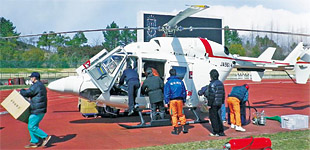
Helicopter
Loaned Company-owned helicopter to replace local government-owned craft that was destroyed in the disaster

For reaching people, getting around, and transporting relief supplies
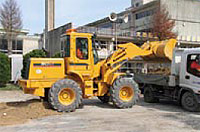
For clearing and carrying away rubble
Installation of Rubble Crushing and Processing Equipment (Otsuchi-cho, Iwate Prefecture)
We decided to provide motorcycles, wheel loaders and large crushing machines to process rubble. A crushing machine—product name: Gulliver; processing capacity, 160 tons/day) was loaned to Iwate Prefecture for one year at no cost to the local government. The machine was installed in Otsuchi-cho in March 2012 and began operation. A mountain of rubble still remains to be processed but this machine will surely demonstrate the necessary capability to crush through all that debris.
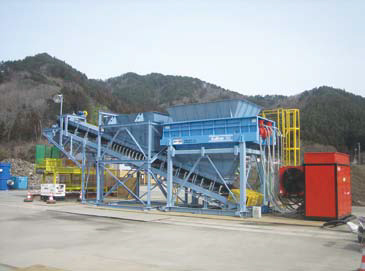
Rubble crushing machine
Rubble Incineration and Processing Unit in Operation (Sendai, Miyagi Prefecture)
Kawaki installed a temporary rotary kiln facility under lease to the city of Sendai. This facility is similar to the one that was kept busy incinerating rubble from the Great Hanshin Earthquake. The Sendai unit went into operation in December 2011 and is making good progress in processing rubble. In fact, the city is getting through the rubble cleanup process faster than anticipated and has announced that it will accept rubble from other municipalities in Miyagi Prefecture for processing at this location.
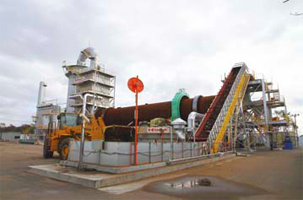
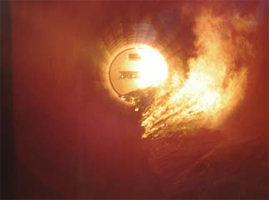
Soil Remediation Verification Test (Date, Fukushima Prefecture)
In a joint effort with Hakkisangyou Inc., a maker of flocculants (coagulating agents), and the Hyogo Prefectural Institute of Technology, KHI conducted remediation tests on cesium-contaminated soil at a playing field in the city of Date. In this test, cesium was flushed out of the soil using a flocculant-based rinse and then collected. The test successfully brought soil contamination below the established upper limit and left no residual cesium in the rinse.
The flocculants can be used with peace of mind because it is made from natural ingredients, and the kit can be used repeatedly in multiple areas because it is portable. Efforts will be made to turn the kit into a marketable product capable of addressing the problem of soil pollution.

Soil remediation verification test
Fiscal 2013 Support for Recovery from the Great East Japan Earthquake
Donation of Jet Ski Personal Watercraft
On March 6, 2013, to support the recovery of the coastal fishing industry and help prepare for future emergencies, KHI donated a Jet Ski STX-15F to Matsushima Town in Miyagi Prefecture.
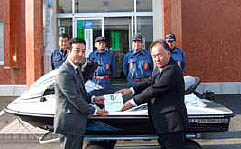

Support for Construction of Tohoku Rainbow House
In March 2013, KHI donated ¥2 million to support the Tohoku Rainbow House*, which is being built by the Ashinaga charity to look after the emotional needs of children orphaned by the earthquake disaster.
Fiscal 2014 Support for Recovery from the Great East Japan Earthquake
Donation of Jet Ski Personal Watercraft
In March 2014, KHI donated a Jet Ski STX-15F and trailer to the city of Miyako, in Iwate Prefecture, and another jet ski and trailer to the town of Yamada, also in Iwate Prefecture, as well as a third set to the town of Onagawa, in Miyagi Prefecture, to support recovery in the region and help prepare for future emergencies. We plan to continue this kind of support in the area devastated by the March 2011 disasters.
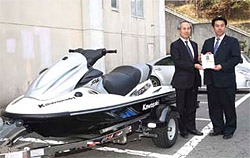
Donated jet ski and trailer (Onagawa, Miyagi Prefecture)
Efforts to Address Stable Energy Supply
An issue that the Great East Japan Earthquake pushed into the spotlight is stable energy supply, and the KHI Group addresses this issue in various ways.
Effective Operation of Standby Gas Turbine Power Generation Systems in Times of Disaster
In a survey of system operating status during the power outages and rolling blackouts associated with the events of March 11, 2011, and the aftershocks that followed, 1,034 standby gas turbine generation systems out of 1,035 continued to supply power without any problem, for an operating rate of 99%.
The one system that was not in operation had not undergone regular maintenance. Targeting an operating rate of 100%, we will establish a power feed structure that is truly reliable even in emergency situations.
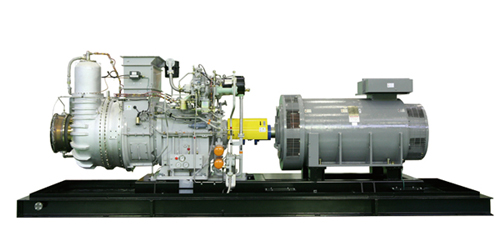
Highly reliable standby gas turbine power generation system
Increased Production of Gas Engine Power Generation Systems
Given the inability of commercial power facilities to meet demand after the earthquake and tsunami, the need for stable power supply grew stronger day by day. Distributed power sources, especially in-house power generation systems, are widely seen as a possible answer to the problem, and KHI, seeking to contribute to stable power supply without harm to the environment, expanded monthly production capacity of its Green Gas Engine to four units. This system boasts the world’s highest power generating efficiency and environmental features.
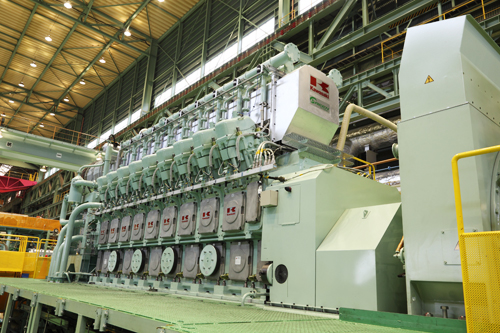
The Green Gas Engine boasts the world’s highest power generating efficiency—49.5%.
Power Supply to Power Company
In response to a request to address reduced power capacity paralleling the shutdown of nuclear power plant operations, KHI increased its generating capacity for the Kawasaki-brand gas turbine in-house power generation system at Akashi Works, boosted the amount generated, and supplied the output to a power company to ensure stable power supply to its service area.
Between February 1, 2012 and March 31, 2012, total power volume hovered at 16 million kWh. This is equivalent to the amount used by approximately 27,000 ordinary households. Going forward, we will continue to support the power company to the extent that we are able and meet the electricity needs of society.
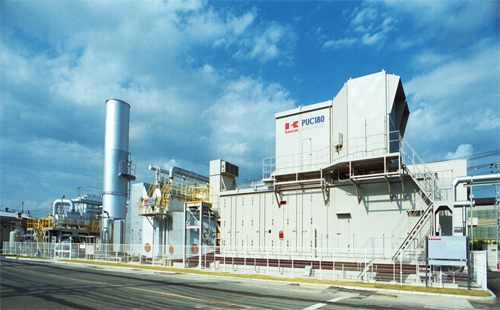
Gas turbine generation system at Akashi Works
Contact
If you need more information about our business,
please feel free to contact us.





